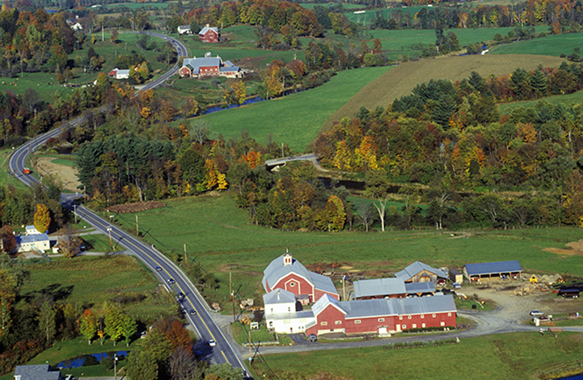It often takes a disaster to draw attention to environmental injustice. The crisis in Flint is terrifying…And only one incident in what might be called an epidemic of 'Environmental Racism.'
“People have strong ties to their land, their homestead, and they come back to Uniontown to retire, for fresh air, and to have a place, a clean place, for their grandchildren,” Calhoun wrote in testimony recently submitted to the US Commission on Civil Rights and shared with Truthout. “Or at least they used to.”
In 2008, a coal ash impoundment in Kingston, Tennessee, burst open, releasing a billion gallons of toxic sludge contaminated with dangerous levels of lead, arsenic and other heavy metals. Kingston is more than 90 percent white. Four million tons of coal ash from the spill have since been transferred to a massive landfill with few pollution controls located right across the street from homes in Uniontown.
The EPA has never once made a formal finding of a civil rights violation in its 23-year history
The landfill is permitted to take up to 15,000 tons of waste shipped in from 33 other states, making it the largest landfill operation in Alabama. Calhoun says the smell is awful, and the landfill attracts vultures, flies and rats. Residents – especially children – have developed “all kinds of health problems they didn’t have before,” and Calhoun herself has developed neuropathy, a chronic nerve condition her doctor suspects to be caused by lead poisoning.
“Why did Uniontown become the dumping ground for the eastern half of the country, and then why did it become the dumping ground for coal ash?” Calhoun asks in her testimony. “No one thought that the members of this poor community would fight back or that anyone would listen to us.”
The community is fighting back, and in 2013 Calhoun and many of her neighbors filed a civil rights complaint against state environmental regulators with the Environmental Protection Agency (EPA). The group is part of the grassroots environmental justice movement, which has spent decades calling out industries and government agencies that disproportionately steer pollution toward low-income neighborhoods and communities of color.
The EPA’s civil rights division, however, has a massive backlog of complaints, and a poor record of responding to them. In fact, the agency has never once made a formal finding of a civil rights violation in its 23-year history.
Environmentalists say the EPA’s ability to take action has long been diminished by budget cuts and partisan politics. They are now wondering whether the next administration might finally confront this ongoing neglect.
Seizing Flint’s Political Moment
Environmental racism has never been a popular campaign issue among presidential candidates, but that changed in mid-January when Bernie Sanders and Hillary Clinton lashed out at Michigan Gov. Rick Snyder for allowing drinking water contaminated with lead to pump through the municipal pipes in Flint, Michigan, a working-class and majority-Black city.
It often takes a disaster to draw attention to environmental injustice. The crisis in Flint is terrifying – residents were left to drink poisoned water for months despite warnings from researchers who found elevated levels of lead in children – but presidential candidates and the dominant media did little to acknowledge that the pattern of pollution in communities of color extends far beyond Michigan.
Would any of these candidates really fight for environmental justice as president?
Nationally, people of color are nearly twice as likely as white people to live within one mile of facilities that use and store chemicals so dangerous that facility operators must submit risk management plants to the government. Children of color make up nearly two-thirds of the 5.7 million children living near these high-risk facilities, and poor people of color are significantly more likely to live near massive stockpiles of dangerous chemicals than white people living above the poverty line.
In the event of a toxic release, spill or explosion, communities of color would face the brunt of the impact, according to a recent report by the Center for Effective Government.
Environmentalists and community activists have observed similar patterns near other sources of pollution over the years, including landfills and the power plants that create the coal ash that Calhoun says is a “constant worry in our lives.” Researchers at the University of Michigan published twin studies in January showing that low-income people and people of color don’t end up living near hazardous waste sites and other polluters because housing is cheap. Instead, their communities are disproportionately targeted by industries that follow “the path of least resistance” when deciding where to build facilities.
Clinton alluded to these disparities at the close of the January 17 Democratic debate, declaring that “if kids in a rich Detroit suburb” were drinking contaminated water, authorities in Michigan would have acted quickly to stop the problem. It was a deft move at the end of a debate that touched on several issues important to voters of color. Clinton “seized the political moment,” as The Washington Post put it, and she even sent aides to assist Flint’s Democratic mayor.
Sanders, who is struggling to match Clinton’s popularity among Black voters, was not to be outdone – he demanded Snyder resign, saying that thousands of children may now suffer brain damage from lead because the governor knew about the problem and did nothing for months to fix it.
Children of color make up nearly two-thirds of the 5.7 million children living near these high-risk facilities, and poor people of color are significantly more likely to live near massive stockpiles of dangerous chemicals than white people living above the poverty line.
Meanwhile, candidates in the Republican field seemed caught off guard as several top candidates dodged the issue. Perhaps the strangest response came from Ted Cruz, who called the crisis “an absolute travesty” and a “failure” of government before his campaign began handing out bottled water – but only to pro-life pregnancy centers.
Pouncing on the media attention around the mass poisoning of children resulting from the ineptitude of government officials, if not their outright racism, seems like a political no-brainer. But would any of these candidates really fight for environmental justice as president?
What the Candidates Missed in Flint
If history is any indication, a president who recognizes the importance of addressing environmental racism would certainly go against the grain.
The EPA established its civil rights office during the early years of the Clinton administration, allowing communities to file complaints under the Civil Rights Act of 1964, which prohibits recipients of federal funds – such as state environmental regulatory agencies – from discriminating based on race. Since then, the EPA has rejected or dismissed the vast majority of complaints and has never formally found a violation of the Civil Rights Act, according to EPA data and a 2015 investigation by the Center for Public Integrity.
A case in point: In 1992, social justice attorneys and community activists in Flint filed a civil rights complaint with the EPA against the Michigan Department of Natural Resources for permitting a wood incinerator to be built in a lower-income, majority-Black neighborhood. The complaint argued that the decision followed a pattern of placing incinerators and other hazardous facilities in communities of color, and the EPA’s civil rights office accepted the complaint for investigation in 1995.
The EPA rejected a separate complaint as untimely in 1995 as the incinerator began operation, burning wood wastes from demolition sites that frequently contained lead-based paints and other chemicals. Environmentalists now allege that the EPA has failed to actually investigate the earlier complaint and others like it for more than two decades, even as its regulators labeled the incinerator a “significant violator” for its pollution.
As advocates challenged the incinerator in Flint, President Bill Clinton issued an executive order in 1994 requiring the EPA and other federal agencies to address the disproportionate environmental impacts of their decisions and programs on communities of color and low-income communities. Environmentalists argue the executive order has never truly been implemented.
The EPA rejected a separate complaint as untimely in 1995 as the incinerator began operation, burning wood wastes from demolition sites that frequently contained lead-based paints and other chemicals.
Marianne Engelman Lado, an attorney for Earthjustice who sued the EPA on behalf of advocates in Flint and four other communities waiting for action on their civil rights complaints, said the agency has been unable to enforce the executive order and civil rights law because it’s constantly facing budget cuts and political attacks, especially from conservatives.
“
Hillary Clinton’s campaign did not respond to questions from Truthout on how she would bolster the EPA to enforce the Civil Rights Act and her husband’s executive order, but the Sanders campaign pointed out that Senator Sanders introduced legislation in 2005 to enhance the executive order and require it to remain in force.
The heart of Sanders’ environmental justice platform can be found in his “climate justice” plan, backed by legislation that would tax fossil fuels and ban extraction on public lands, according to a campaign aide who spoke to Truthout. Environmental justice groups provided input on the plan, and resulting revenues would help pay for resilience infrastructure for communities most affected by climate disruption.
Lado, however, said the next administration needs to specifically prioritize bolstering the EPA, which provides the only real space for environmental civil rights law to be enforced, and that space is in serious disarray.
Four years after they filed a complaint against the incinerator in Flint, activists filed another complaint against a proposed steel mill. The EPA ruled that, even though the plant would spew mercury and other pollutants into neighborhoods already overburdened by pollution, there was no proof of discrimination because the facility was expected to meet federal air standards.
“This is a community with so many insults to their health, so many toxic sources, and they have been fighting for so long to solve these environmental justice problems, and nobody listened to them,” Lado said.
The steel mill was never built, but Lado said the case conflated basic pollution standards for a single facility with anti-discrimination statutes, setting a dangerous precedent that environmental justice advocates are still fighting against today. And it all happened in Flint.
Correction: An earlier version of this story incorrectly stated that advocates in Flint, Michigan, filed a civil rights complaint challenging the permits for a wood incinerator in 1994, and the EPA accepted the complaint for investigation in 1995. Two separate complaints were actually filed – one in 1992 that was accepted for investigation by the EPA in 1995, and a separate complaint filed in 1994 that was rejected as untimely the following year. Earthjustice’s legal team explained that the EPA gave both complaints the same case number on the agency’s website, which caused the confusion.
Copyright, TruthOut. Reprinted with permission.
Mike Ludwig is an investigative reporter at Truthout and a contributor to the Truthout anthology, Who Do You Serve, Who Do You Protect? Follow him on Twitter: @ludwig_mike.
This piece was reprinted by EmpathyEducates with permission. We thank the Author, Mike Ludwig and TruthOut for a well-researched, vital and insightful essay.











Leave A Comment